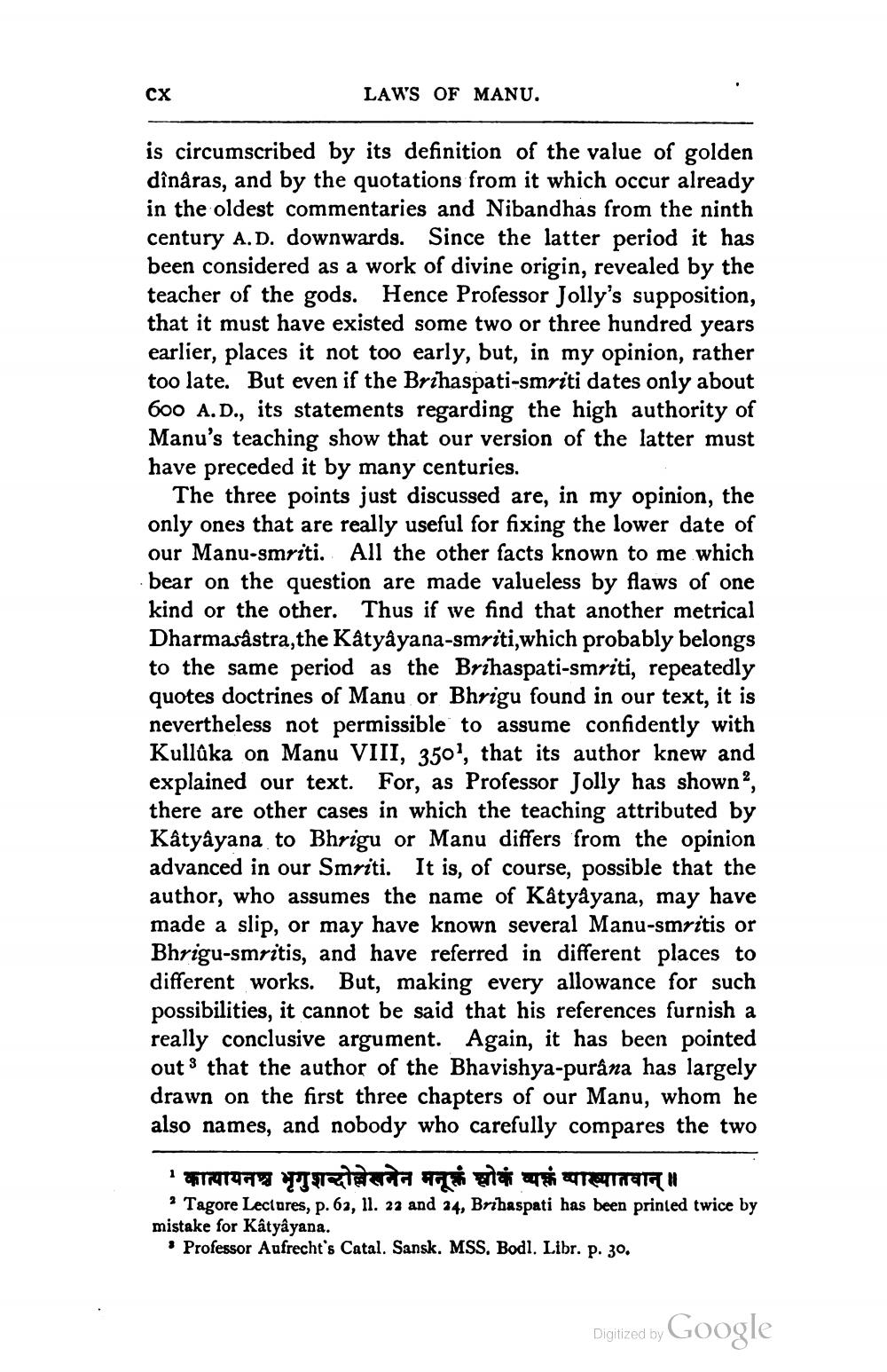________________
CX
LAWS OF MANU.
is circumscribed by its definition of the value of golden dînâras, and by the quotations from it which occur already in the oldest commentaries and Nibandhas from the ninth century A.D. downwards. Since the latter period it has been considered as a work of divine origin, revealed by the teacher of the gods. Hence Professor Jolly's supposition, that it must have existed some two or three hundred years earlier, places it not too early, but, in my opinion, rather too late. But even if the Brihaspati-smriti dates only about 600 A.D., its statements regarding the high authority of Manu's teaching show that our version of the latter must have preceded it by many centuries.
The three points just discussed are, in my opinion, the only ones that are really useful for fixing the lower date of our Manu-smriti. All the other facts known to me which bear on the question are made valueless by flaws of one kind or the other. Thus if we find that another metrical Dharmasastra, the Kâtyâyana-smriti,which probably belongs to the same period as the Brihaspati-smriti, repeatedly quotes doctrines of Manu or Bhrigu found in our text, it is nevertheless not permissible to assume confidently with Kullûka on Manu VIII, 3501, that its author knew and explained our text. For, as Professor Jolly has shown2, there are other cases in which the teaching attributed by Kâtyâyana to Bhrigu or Manu differs from the opinion advanced in our Smriti. It is, of course, possible that the author, who assumes the name of Kâtyâyana, may have made a slip, or may have known several Manu-smritis or Bhrigu-smritis, and have referred in different places to different works. But, making every allowance for such possibilities, it cannot be said that his references furnish a really conclusive argument. Again, it has been pointed out that the author of the Bhavishya-purâna has largely drawn on the first three chapters of our Manu, whom he also names, and nobody who carefully compares the two
1
कात्यायनश्च भृगुशन्दोल्लेखनेन मनूक्तं लोकं व्यक्तं व्याख्यातवान् ॥
2 Tagore Lectures, p. 62, 11. 22 and 24, Brihaspati has been printed twice by mistake for Kâtyâyana.
Professor Aufrecht's Catal. Sansk. MSS. Bodl. Libr. p. 30.
Digitized by
Google




